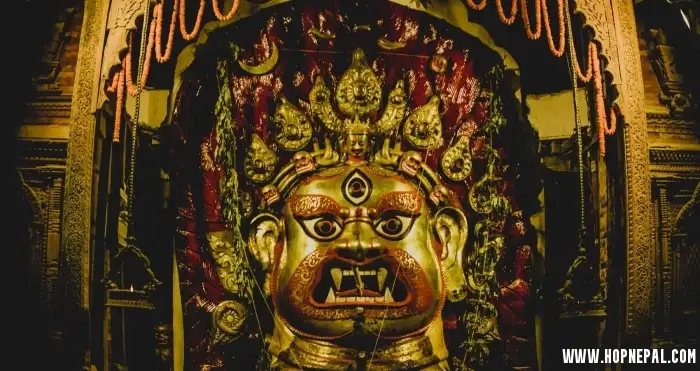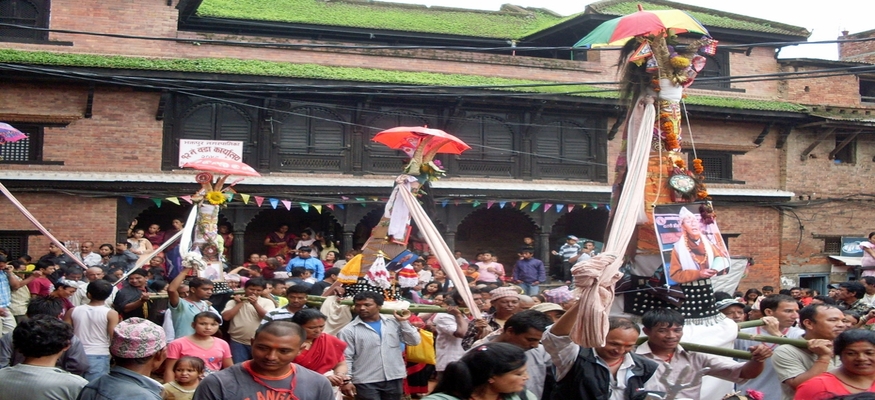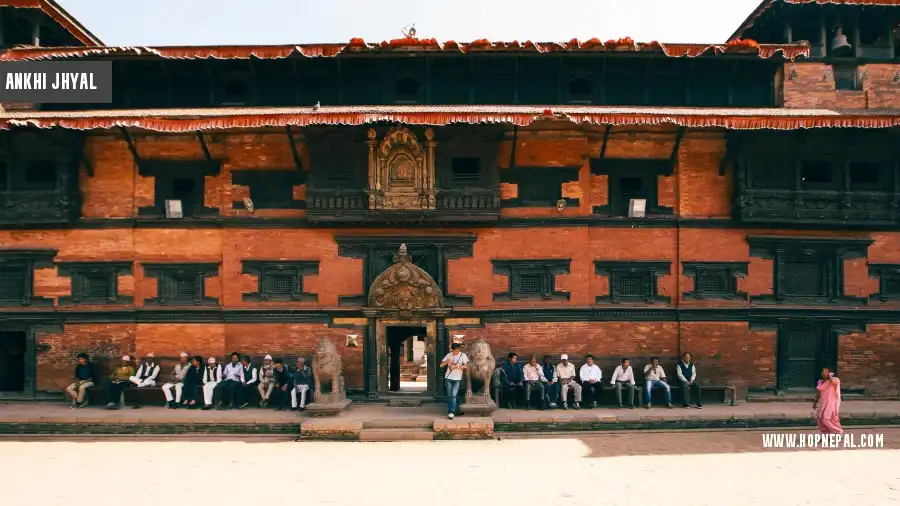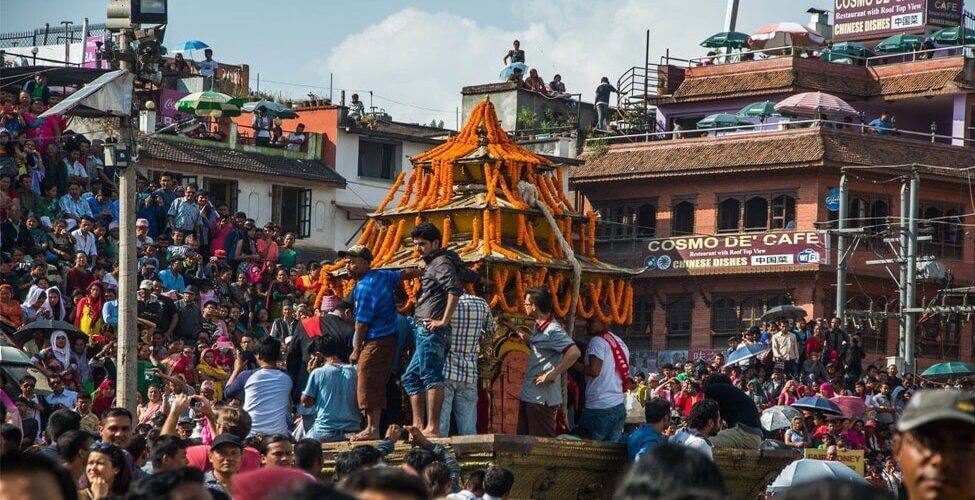Nepal is a country with a diversified cultural and geographical landscape. Nepal is a multi-religious, multi-cultural, and multi-linguistic country with roughly 125 ethnic groups and more than 123 languages. Among Nepal's many civilizations, the Newari culture is one of the most distinctive and appealing.
Nearly half of the Kathmandu valley's population is Newar, a people with a rich culture and traditions. They primarily live in Kathmandu, Patan, and Bhaktapur inside the valley. Aside from these districts, the Newari caste is also heavily represented in Butwal, Palpa, and Bandipur. To be more specific, the Newars are major contributors to Nepal's rich history, architecture, arts, culture, and business.
Origin Of The Name Newar
The word 'Newar,' which means 'Nepali,' is thought to have sprung from a famous (Prakrit) version. This name was initially discovered in one of the renowned texts in 1654.
Newari History
The history of the Newars is not restricted to Nepal. The majority of Newars come from India and Tibet to the Kathmandu valley. They are a mix of Indo-Aryan, who originated in India, and Tibetan-Burman, who originated in Tibet. These groups coexisted in Nepal, forming a new social structure while preserving their respective languages and cultures.
 Image Cr: Jhi Newa: Magazine
Image Cr: Jhi Newa: Magazine
Caption: Ancient art depicting the Newari culture
Following that, the entire Newar history has been documented in the Kathmandu valley. Prior to the Gorkha Kingdom's dominance, the Newari King was the sole ruler of Kathmandu Valley. As a result, the Nepal Mandala and the birth of the Newari caste are inextricably linked. Newars' position and authority gradually faded with the Modern State of Nepal; yet, their culture and traditions are still alive. The Newari people are now dispersed across the country.
Newari People's Language And Occupation
The language of the Newars is known as 'Nepal Bhasa.' It is related to Tibeto-Burman languages, but it is influenced heavily by Indo-Aryan languages such as Maithili and Sanskrit.
Because there were so many cultivable grounds in the Kathmandu valley in the past, the Newari people were primarily involved in agriculture. However, as modernization progressed, they began to broaden their horizons, and they are now well-known businessmen. They have total command over the manufacturing and service industries.
Religion Of Newari People
The Newars are Hindus and Buddhists. Hinduism is more important to Indo-Aryans, whereas Buddhism is more important to Tibeto-Burmans. Both of these religions are still practised and valued in current times. According to the 2001 Nepalese census, 84 per cent of Newars practice Hinduism and 15% practice Buddhism.
Culture & Tradition Of Newari People
The Newari people are known for their way of life. They have rites and practices that must be adhered to from birth to death. They have their traditions for festival celebrations, weddings, and funerals.
 Image Cr: VCD Nepal
Image Cr: VCD Nepal
Caption: Newari girls dancing wearing their cultural attire
I also want to make our readers sure that Newars are among the most rational ethnicity because all of their rituals are courteous. They don't believe in any behaviours that could hurt living individuals.
Their unique style of celebrating the marriage rite is one of the historic and still existing traditions. They perform Bel Bibaha, in which pre-teen females marry Bel (Bengal quince) to ensure that they will be fruitful for the rest of their lives.
Newari Festivals
The various celebrated festivities depict the Newari culture in the lunar calendar month in which they occur. Festivals are held in the streets and commemorated by worshipping and cooking feasts with the family. The following are some of the prominent festivals:
#1. Mha Puja
Newars are the only ones who celebrate it during Tihar. Aside from the crow, cow, and brother pujas, Newars have a day dedicated to Mha puja or self-worship.
 Image Cr: The Kathmandu Post
Image Cr: The Kathmandu Post
Caption: Mha Puja celebrated by locals in Basantapur, Kathmandu
This day is devoted entirely to oneself, during which they clean themselves and their homes and offer themselves delectable delicacies.
#2. Indra Jatra
This festival, which lasts eight days, takes place in September. In this Jatra, Goddess Kumari is dragged in a procession in her chariot. Masked dancers perform in a variety of musical styles and play traditional instruments. During this occasion, the entire street of Bhaktapur and Patan comes alive.

Indra Goddess of Rain
#3. Gai Jatra
This celebration honours cows and is held between September and October. The real intent of this festival is to deliver comfort to those who have lost loved ones and make them feel less alone.
 Image Cr: Enwil
Image Cr: Enwil
Caption: Gai Jatra celebration in Bhaktapur
The Newari people make and carry paper cutouts of cows through the streets while dancing and enjoying themselves.
Newari Architecture
In the Kathmandu Valley, there are seven UNESCO World Heritage Sites and 2,500 ancient temples that display Newar artisans' talent and sense of aesthetics. Newar architecture is distinguished by fine masonry and woodcarving.
The valley's architectural structures include residential houses, palaces, monastic courtyards known as baha and bahi, temples, stupas, rest houses, and priest residences. The Durbar Squares of Kathmandu, Bhaktapur, and Lalitpur, the medieval royal palace complexes built between the 12th and 18th centuries, house the majority of the major monuments.
 Exquisite Newari architecture showcasing rich cultural heritage
Exquisite Newari architecture showcasing rich cultural heritage
Pagodas, shikharas, chaityas, stupas, and various Newa architecture can be found. The Kathmandu valley's trademark is the multiple-roofed pagoda, which may have originated in this area and expanded to India, China, Indochina, and Japan.
Arniko, a Newar youngster who journeyed to the court of Kublai Khan in the 13th century AD, was the most famous artisan who impacted aesthetic advancements in China and Tibet. He is most renowned for constructing the white stupa at Beijing's Miaoying Temple.















